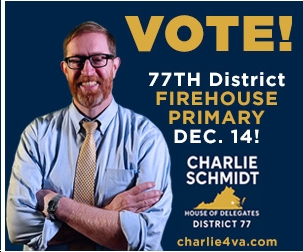by Jon Sokolow
The Virginia State Conference NAACP once again has reaffirmed its longstanding opposition to the Atlantic Coast Pipeline. In a court brief filed on April 12, the state NAACP has urged a federal appeals court in Washington to revoke the key federal permit for the pipeline. Without that permit, the project will never be built.
The state NAACP was part of a group of ten religious, social justice and civil rights organizations that signed onto a “friend of the court” brief filed in the Court of Appeals for the District of Columbia. The group included the Center for Earth Ethics (headed by Karenna Gore); Kairos Center for Religions, Rights, and Social Justice; the Natural Resources Defense Council; the North Carolina Poor People’s Campaign, Repairers of the Breach (led by Rev. William Barber III); Satchidananda Ashram – Yogaville, Inc.; Union Grove Missionary Baptist Church; Virginia Interfaith Power & Light; and WE ACT for Environmental Justice.
This powerful court filing is the latest blow to Dominion Energy’s proposed $7.5 billion fracked-methane pipeline, which is two years behind schedule and $3 billion over budget. Previous federal court decisions in Richmond have thrown out multiple permits required by the pipeline and all construction activity has been stopped as a result.
The 50-plus-page court filing states that the Federal Energy Regulatory Commission (FERC) violated federal law and “ignored significant minority populations that live along the proposed route.” It argues that the permit issued by FERC should be revoked because FERC “did not take a hard look at the health and environmental effects of the Atlantic Coast Pipeline” on “environmental justice communities.” It points in particular to FERC’s failure to consider the disproportionate effect that the pipeline would have on the historic African American community of Union Hill, in Buckingham County, as well as on Native American communities along the proposed route.
As the brief points out, Dominion Energy seeks to build three compressor stations to transport fracked methane “natural” gas along a 600-mile route from West Virginia through Virginia and North Carolina. “All three compressor stations would be located in census tracts where the minority population, or the population under the poverty level, is higher than the state average.”
On Union Hill, the brief notes:
“Compressor station 2 would be built in the unincorporated Union Hill community of Buckingham County, Virginia. Union Hill has a rich heritage: The greater Union Hill and Woods Corner Rural Historic District contains historically African American churches and schools that date back to the founding of the area after Emancipation, and a large slave burial ground on land that was formerly the Variety Shades plantation. Preservation Virginia – described as ‘the nation’s first statewide historic preservation organization’- identified Union Hill, and the area’s historic cemeteries, in particular, as among the most endangered historic sites in Virginia because of the Atlantic Coast Pipeline.”
“Union Hill is overwhelmingly African American. At least one survey of the residences closest to the compressor station site found that approximately 74 percent of the residents surveyed were African American, and 81 percent were minorities.”
The brief notes that FERC used census tract data covering 500 square miles, effectively ignoring the small Union Hill community, which is located within roughly one mile of the proposed compressor station site. This violates federal law:
“The Environmental Protection Agency guidance relied on by FERC warns that ‘pockets of minority or low-income communities’ could be missed in a ‘traditional census tract-based analysis’ and recommends that agencies ‘should attempt to identify whether high concentration ‘pockets’ of minority populations are evidenced in specific geographic areas.”
Citing data from the groundbreaking “Fumes Across the Fence Line report by the national NAACP, as well as data from the U.S. Department of Health and Human Services, the brief notes:
“Gas infrastructure is often sited in low-income or minority communities. For example, ‘[m]ore than 1 million African Americans live within a half mile of existing natural gas facilities and the number is growing every year…. As a result of ozone increases due to natural gas emissions during the summer ozone season, African American children are burdened by 138,000 asthma attacks and 101,000 lost school days each year.’…African American children have asthma at nearly twice the rate of white children, and their death rate with asthma as the underlying cause is ten times greater than white children.”
FERC simply ignored the health effects that the ACP would have on these vulnerable communities.
In addition, the brief explains:
“In identifying affected minority communities, the Commission lumped all minority populations together, thereby conflating distinct environmental justice concerns. For example, the Commission needed to consider the effect of the pipeline on the ‘distinct cultural practices’ of Indian tribes affected by the pipeline….Along the pipeline route in eastern North Carolina, American Indians make up 13 percent of the population, while comprising just 1.2 percent of the population of the state….Much of the American Indian population affected by the pipeline route live in Robeson County, North Carolina….”
The brief also points out that “commenters informed the Commission that the number of American Indians living along the pipeline route in North Carolina ‘represents one quarter of the state’s American Indian population and 1% of the entire American Indian population of the U.S.’” Yet, “the environmental justice analysis is silent on this issue.”
The Virginia State Conference NAACP decision to sign onto this brief is the latest in a series of public statements by the NAACP in opposition to the Atlantic Coast Pipeline. In January 2019, for example, the state NAACP filed comments with the Virginia Air Pollution Control Board that said in part:
“We have followed this permitting process closely and we remain deeply troubled by what appears to be a deliberate effort by the applicant, Dominion Energy, to erase the historic African American community of Union Hill from the record of consideration. This is nothing more or less than an effort to erase the relevance of African American’s presence, culture, and heritage.”
This court filing also comes in the wake of a large and spirited rally in Union Hill on February 19 led by Vice President Al Gore and Reverend William Barber III. Rev. Barber told the crowd that the Union Hill compressor station and the Atlantic Coast Pipeline were “sinful,” “scandalous” and examples of “systemic racism.” Vice President Gore called the project a “reckless, racist ripoff.” Both outlined the many reasons why this pipeline should never be built.
The February rally came just two weeks after Governor Ralph Northam and Attorney General Mark Herring admitted to having worn blackface when they were younger. Northam admitted to having appeared in a college yearbook page photo of two men – one in blackface and the other in a KKK robe and hood. A day later, Northam denied appearing in the photo. His denial came during a bizarre press conference in which he admitted to having worn blackface a different time to imitate Michael Jackson and then almost moonwalked during the press conference before his wife stopped him.
Northam pledged at the time to employ “facial recognition software” to prove he was not in the yearbook photo and said he would take a “reconciliation tour” across the state.
Neither has happened.
Instead, Northam is trying to go about business as usual, announcing that he would appear at a Democratic fundraiser in Northern Virginia on Sunday, April 14, He failed to show up to that fundraiser, reportedly citing “security concerns,” after the Fairfax County NAACP organized a protest rally.
Attorney General Herring, for his part, also pledged to take unspecified actions to heal the pain caused by his own blackface admission. Days after the scandal broke, however Herring informed the Fourth Circuit Court of Appeals that he would be defending Virginia in a lawsuit brought by community members to revoke the Virginia air pollution permit for the compressor station in Union Hill. In so doing, Herring decided to stand with Dominion Energy in its effort to erase the historic community of Union Hill.
Mark Herring has been asked to switch sides in the Union Hill fight. To date, he has not responded publicly. Nevertheless, the road to reconciliation – for the legacy of racism past and present – runs through Union Hill.
Because in Virginia, the past is never dead. It is not even past.













![Video: Sen. Tim Kaine on “Meet the Press” Says DoJ Not Complying with the Law on Release of ALL the Epstein Files, But Argues “I think [impeachment/contempt for DoJ officials is] premature”](https://bluevirginia.us/wp-content/uploads/2025/12/kainemtp1221-100x75.jpg)

![Video: Rep. James Walkinshaw (D-VA11) Says “It’s enormously frustrating,” as “the law is clear…the full files were supposed to be released [yesterday] and the Trump administration is not in compliance with that law”](https://bluevirginia.us/wp-content/uploads/2025/12/walk1219-100x75.jpg)